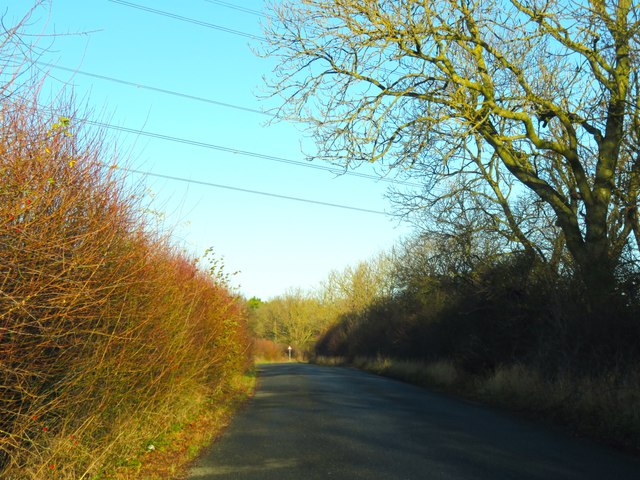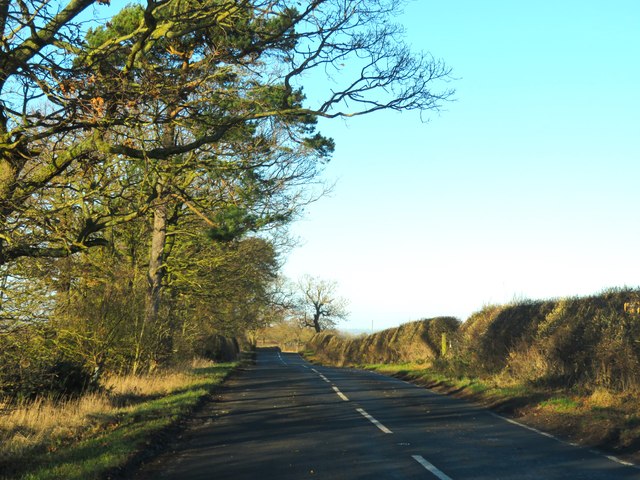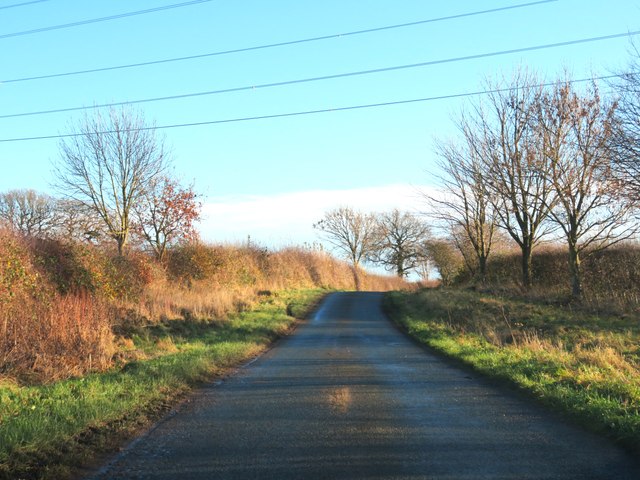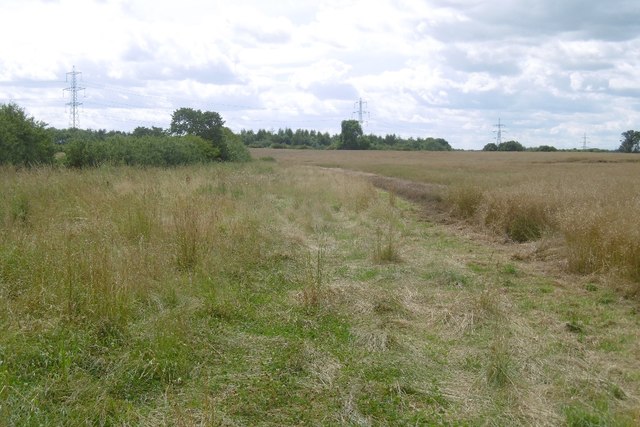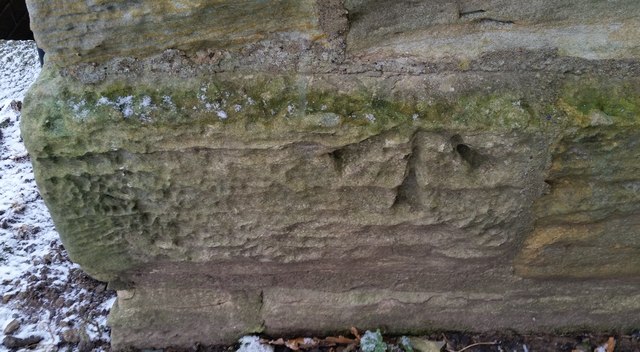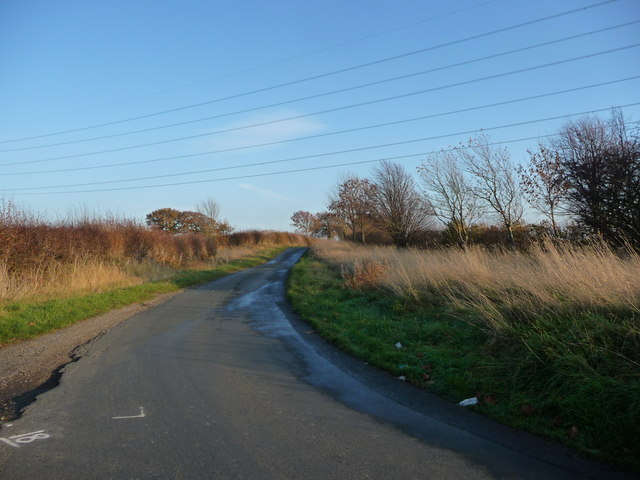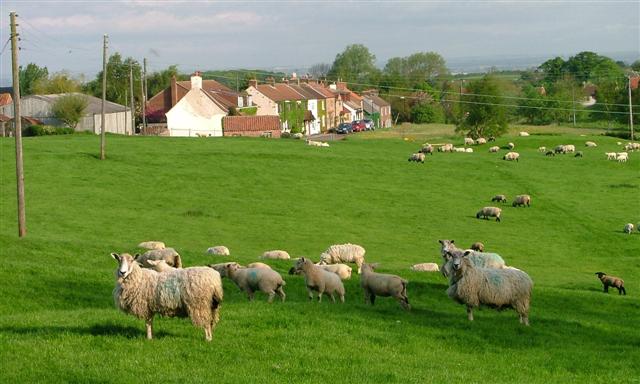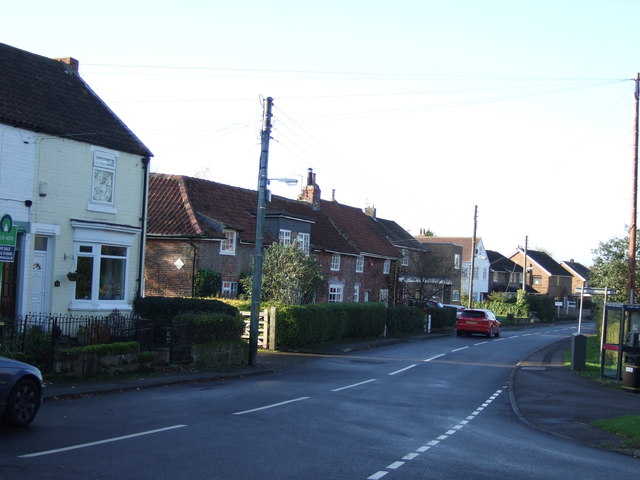A view from Tanton Lane across the undulating farmland between Stokesley and the village of Seamer towards the distant Cleveland Hills. It is basically the watershed of the River Tame, a tributary of the River Leven, although drainage has been improved over the centuries by the digging of ditches or stells. But I’ll return to one of these stells later.
In 1830, there lived in Eaglescliffe on the north bank of the Tees, a man by the name of William Huntley. He was one of the sons of a respectable farmer who had died about ten years before, leaving behind a widow and several children. His will stated his considerable property was to be divided between them but the wording was so obscure that the case ended up in court. Huntley was about 34, married, but lived apart from his wife, and in order to support himself he had become a weaver. One feature of Huntley, the relevance of this will become apparent later, was that he had a projecting molar or dog tooth giving him a distinctive appearance, a sort of “twist of the mouth”.
Now Huntley was pals with a Robert Goldsborough who lived at Hutton Rudby and was about the same age as Huntley. He was a widower, with a couple of children and was fairly destitute having recently been on parish relief.
Huntley’s mother also lived in Hutton Rudby so he frequently made the journey often staying at Goldsborough’s house.
On Thursday, 22nd July 1830, Huntley finally received the money due under his father’s will. He was paid the sum of £85. 16s. 4d. in seventeen £5 banknotes with the remainder in silver and copper. He told many people he had “come into his fortune” that day yet there was suggestion that he wanted to avoid some creditors from finding out and was thinking of emigrating to America to escape their attentions. Nevertheless the following evening, Huntley and Goldsborough, together with a third man named Garbutt, were seen walking together towards Foxton Bridge, Goldsborough with a gun in his hand, apparently off on a poaching adventure in Crathorne Wood. An adventure from which Huntley never returned.
Later it was reported that two gunshots were heard from the direction of Crathorne Wood between eleven and twelve o’clock on the Friday night. Goldsborough’s gun, incidentally, was single-barrelled.
A few days later the stain of a pool of blood was seen on the road near to the bridge. Goldsborough was seen to be flush with money, and found to be in possession of a silver watch and six new shirts, all bearing the initials “W. H.” It was all highly suspicious but as no body had been found, there was no proof that Huntley had been murdered, or that he was even dead, the corpus delicti, the fact that a crime has been actually perpetrated, had failed, Goldsborough was not arrested and subsequently, within a month or two, moved to Barnsley.
Huntley’s disappearance was noticed as soon as six o’clock on the Saturday and suspicions soon fell on Goldsborough who appeared nonchalant and unconcerned. He said to one of Huntley’s creditors that Huntley had gone to Whitby, where he was going to take a ship to America. But it turned there were not any sailings to America from Whitby and had not been for some time. Later to another enquirer, Goldsborough said that Huntley had gone to Bilsdale to see some friends. The constables searched his house, and found in it the watch, and shirts bearing the initials ‘W.H.’ none of which he attempted to conceal and gave various inconsistent explanations for having them. Huntley had given them to him. He had left them as security for the repayment of a debt. When challenged Goldsborough replied “You’ll all see, by and by, whether he’s been murdered!”
About a week or ten days after Huntley’s disappearance, Goldsborough was seen sitting beside a large fire in his house, with a strong smell of burning wool permeating the room. He appeared disconsolate, and agitated, and reserved and was noted to be in possession of a considerable sum of money, in bank-notes, gold and silver, which he made no attempt to conceal. He was seen to have made various purchases and made offers to lend money.
Towards the end of autumn, Goldsborough left Hutton Rudby and moved to Barnsley. There he hired a loom off the man, at whose house he stayed. When asked what his name was, he replied “Robert Towers” from Darlington. Some weeks later he married a woman who he said “brought him a sum of £80 for her fortune“.
Eleven years later, some workmen were clearing one of the stells between Seamer and Stokesley, about a hundred yards from the road, and discovered a human skeleton in a hollow under one of its banks. It had been thrust in “backside first, and doubled up“. The bones were carefully extracted and laid on the side of the stell. As soon as the farmer arrived at the end of the day and looked at them, he noticed a long projecting tooth on the left side of the lower jaw and remembering William Huntley’s disappearance, was aware of its significance and the constable called.
The skull was packaged up but as it began to dry, the all-important tooth fell out but not before being seen and confirmed by others.
The stell was some five miles distant from the stale pool of blood at Foxton Bridge.
The constable went to Barnsley to arrest Goldsborough who said “I am innocent! They may swear my life away if they please, but I never had any clothes, or a watch, or anything belonging to Huntley ! The last time I ever saw him was on Thursday!” The constable however, released him the next morning after considering he had not enough evidence to warrant his detention.
It is now that a fourth person emerges claiming to be on that poaching adventure. The magistrates had offered a reward of £100 for evidence that would lead to the conviction of the murderer of William Huntley. A Thomas Groundy was heard as boasting some intimate knowledge. He was taken into custody, and charged as an accessory after the fact. He turned king’s evidence, and in his sworn statement he said:
“On the Wednesday after William Huntley was missing, Robert Goldsborough came to me, and asked me if I would help him with a bag to Stokesley — he was going to America; and I told him I would go, and we went by Neville’s hind-house, and then we kept no road, and we went down to yon wood beside the stone bridge. He took me to a bag which was laid upon the ground in the wood, and I laid hold of it, and I found like a man’s head, and I asked him what it was — and he stopped about five minutes before he spoke, and he then said — ‘It is a bad job, it is Huntley — as he was waiving (qu. walking) by me, I shot him.’ Then I fell frightened, and wanted to go home, and Goldsborough said — ‘If you mention it, I’ll give you as much.’ And I said I would not mention it, and I wanted to make off, and I made off. That the body was in the wood, within two or three hundred yards from the bridge. It is quite a lonely place. It was a rough place in the wood. Goldsborough never said anything more to me about it, and I was frightened, and durst not mention it to him. It was about hay-time. I knew William Huntley. He had a long tooth, and used to twist his mouth.”
Groundy was placed alone in a room in York Castle, to await the arrival of his sureties. Two or three hours afterwards, he was found to have hanged himself.
Goldsborough was re-arrested, and, having heard Groundy’s statement, made his own:
“On Thursday the 22d July 1830, William Huntley came to my house, and stopped and talked awhile, and asked me to take a walk with him. We took a walk down over the bridge, and through Sir William Foulis’ plantation. We sat down on the side of the footpath, in the plantation; and he says, ‘I want you to look at some papers I have;’ and so he pulled them out of his inside coat pocket, one a largish paper, which he had got from Mr Garbutt [his solicitor], and he says — ‘ I have been drawing my money,’ and said he had drawn £85, 16s., and he said, ‘What is the reason of all this money kept back?’ I looked at the paper, and told him what the sums were for. He said he did not want it mentioned to every person, for Dalkin, Robert Moon, and some others, who wanted money of him, would be at him. I told him I had nothing to do with it — I should say nothing about it — so we came home together, and he was backwards and forwards out of our house, and other houses in the town, all the day. He laid with me all night, as he generally used to do when he came to the town. He was backwards and forwards all the next day, and he hired a cart and brought a loom down from Robert Moon’s, and sold it to George Farnabay that day, and he stopped all night again, and slept with me, and then he came to Stokesley on the Saturday, and tried me several times to go to America with him. I went with him to Stokesley. We were together awhile at Stokesley on that day, and then we parted, and I never saw him any more until the Thursday following, and he came down to me at Farnabay’s shop, at Hutton, and called of me out, and pushed me sadly to go to America with him, and I told him I had two children, and I should not leave them, as I was both father and mother to them. So he stopped awhile, and he said if I would not go, he could not force me; but if I would go, I should share with him as long as he had a half-penny. I refused, and he stopped on a while, and we went out, and I set him down a few yards from the door, and left him. We shaked hands and parted; and he said, if Mr Garbutt did not put it out about his money, he would stop a few days longer, if people did not get to know about it. I have no more to say about it. That was the very last time I clapped my eyes upon him. If it was the last words I had to speak, I never was in Crathorne Woods, nor Weary Bank Woods, with Thomas Groundy. You may think it’s a lie; but if it were the last words I had to speak, I never was with him.”
Goldsborough was then committed to York Castle, for trial at the next assizes.
The judge, in his summing up, told the jury they had to be satisfied, beyond all reasonable doubt, that the bones produced were those of Huntley (but he had strongly expressed that his own opinion was that the evidence was not satisfactory). If they were not satisfied then it was not proved that Huntley was dead and the case must fail. Then, if the bones were Huntley’s, had he been murdered? And had he been murdered by Goldsborough? He advised that little or no reliance should be placed on the evidence contained in Groundy’s statement. They were to remember, that it was for the prosecution to satisfy them of the guilt of the prisoner beyond all reasonable doubt and if they had doubts, then it was their duty to consider the case as not proved, or “to give the prisoner the benefit of the doubt.”
Goldsborough was found not guilty.
The case generated a lot of legal discourse. The title of this post, “Who is the Murderer? Was there a Murder!” was a quote made in a legal monologue of the case.
Might Goldsborough’s account, that Huntley had gone to America, and that Goldsborough was purposely giving contradictory accounts to Huntley’s creditors, to enable him to elude discovery, might have been the true one? He may have left his clothes and watch, and a great portion of his money, in Goldsborough’s hands, to be forwarded to him at the first convenient opportunity, but Goldsborough had reneged on this agreement.
Alternatively, Huntley could have been murdered by Garbutt, in whose company he had been left by Goldsborough. A warrant had been issued against Garbutt at the time of Huntley’s disappearance in 1830, but he is another one who was never heard of again.
Or was Groundy the sole murderer, possibly instigated by Goldsborough, or blackmailed by him after learning of the fact. His suicide could have been a complex fusion of remorse for his lies and fear that his guilt would come out in court.
Finally, could some other permutation of the three, Groundy, Garbutt, and Goldsborough, be principals in the murder. The second gunshot could have been from an undiscovered gun owned by either Groundy or Garbutt.
So, who was the murderer? Was there a Murder?
From my blog: Out and about ... (2021). “Who is the Murderer? Was there a Murder!” [online] Available at:
Link
[Accessed 12 Dec. 2021].
![âWho is the Murderer? Was there a Murder!â A view from Tanton Lane across the undulating farmland between Stokesley and the village of Seamer towards the distant Cleveland Hills. It is basically the watershed of the River Tame, a tributary of the River Leven, although drainage has been improved over the centuries by the digging of ditches or stells. But I’ll return to one of these stells later.
In 1830, there lived in Eaglescliffe on the north bank of the Tees, a man by the name of William Huntley. He was one of the sons of a respectable farmer who had died about ten years before, leaving behind a widow and several children. His will stated his considerable property was to be divided between them but the wording was so obscure that the case ended up in court. Huntley was about 34, married, but lived apart from his wife, and in order to support himself he had become a weaver. One feature of Huntley, the relevance of this will become apparent later, was that he had a projecting molar or dog tooth giving him a distinctive appearance, a sort of “twist of the mouth”.
Now Huntley was pals with a Robert Goldsborough who lived at Hutton Rudby and was about the same age as Huntley. He was a widower, with a couple of children and was fairly destitute having recently been on parish relief.
Huntley’s mother also lived in Hutton Rudby so he frequently made the journey often staying at Goldsborough’s house.
On Thursday, 22nd July 1830, Huntley finally received the money due under his father’s will. He was paid the sum of £85. 16s. 4d. in seventeen £5 banknotes with the remainder in silver and copper. He told many people he had “come into his fortune” that day yet there was suggestion that he wanted to avoid some creditors from finding out and was thinking of emigrating to America to escape their attentions. Nevertheless the following evening, Huntley and Goldsborough, together with a third man named Garbutt, were seen walking together towards Foxton Bridge, Goldsborough with a gun in his hand, apparently off on a poaching adventure in Crathorne Wood. An adventure from which Huntley never returned.
Later it was reported that two gunshots were heard from the direction of Crathorne Wood between eleven and twelve o’clock on the Friday night. Goldsborough’s gun, incidentally, was single-barrelled.
A few days later the stain of a pool of blood was seen on the road near to the bridge. Goldsborough was seen to be flush with money, and found to be in possession of a silver watch and six new shirts, all bearing the initials “W. H.” It was all highly suspicious but as no body had been found, there was no proof that Huntley had been murdered, or that he was even dead, the corpus delicti, the fact that a crime has been actually perpetrated, had failed, Goldsborough was not arrested and subsequently, within a month or two, moved to Barnsley.
Huntley’s disappearance was noticed as soon as six o’clock on the Saturday and suspicions soon fell on Goldsborough who appeared nonchalant and unconcerned. He said to one of Huntley’s creditors that Huntley had gone to Whitby, where he was going to take a ship to America. But it turned there were not any sailings to America from Whitby and had not been for some time. Later to another enquirer, Goldsborough said that Huntley had gone to Bilsdale to see some friends. The constables searched his house, and found in it the watch, and shirts bearing the initials ‘W.H.’ none of which he attempted to conceal and gave various inconsistent explanations for having them. Huntley had given them to him. He had left them as security for the repayment of a debt. When challenged Goldsborough replied “You’ll all see, by and by, whether he’s been murdered!”
About a week or ten days after Huntley’s disappearance, Goldsborough was seen sitting beside a large fire in his house, with a strong smell of burning wool permeating the room. He appeared disconsolate, and agitated, and reserved and was noted to be in possession of a considerable sum of money, in bank-notes, gold and silver, which he made no attempt to conceal. He was seen to have made various purchases and made offers to lend money.
Towards the end of autumn, Goldsborough left Hutton Rudby and moved to Barnsley. There he hired a loom off the man, at whose house he stayed. When asked what his name was, he replied “Robert Towers” from Darlington. Some weeks later he married a woman who he said “brought him a sum of £80 for her fortune“.
Eleven years later, some workmen were clearing one of the stells between Seamer and Stokesley, about a hundred yards from the road, and discovered a human skeleton in a hollow under one of its banks. It had been thrust in “backside first, and doubled up“. The bones were carefully extracted and laid on the side of the stell. As soon as the farmer arrived at the end of the day and looked at them, he noticed a long projecting tooth on the left side of the lower jaw and remembering William Huntley’s disappearance, was aware of its significance and the constable called.
The skull was packaged up but as it began to dry, the all-important tooth fell out but not before being seen and confirmed by others.
The stell was some five miles distant from the stale pool of blood at Foxton Bridge.
The constable went to Barnsley to arrest Goldsborough who said “I am innocent! They may swear my life away if they please, but I never had any clothes, or a watch, or anything belonging to Huntley ! The last time I ever saw him was on Thursday!” The constable however, released him the next morning after considering he had not enough evidence to warrant his detention.
It is now that a fourth person emerges claiming to be on that poaching adventure. The magistrates had offered a reward of £100 for evidence that would lead to the conviction of the murderer of William Huntley. A Thomas Groundy was heard as boasting some intimate knowledge. He was taken into custody, and charged as an accessory after the fact. He turned king’s evidence, and in his sworn statement he said:
“On the Wednesday after William Huntley was missing, Robert Goldsborough came to me, and asked me if I would help him with a bag to Stokesley — he was going to America; and I told him I would go, and we went by Neville’s hind-house, and then we kept no road, and we went down to yon wood beside the stone bridge. He took me to a bag which was laid upon the ground in the wood, and I laid hold of it, and I found like a man’s head, and I asked him what it was — and he stopped about five minutes before he spoke, and he then said — ‘It is a bad job, it is Huntley — as he was waiving (qu. walking) by me, I shot him.’ Then I fell frightened, and wanted to go home, and Goldsborough said — ‘If you mention it, I’ll give you as much.’ And I said I would not mention it, and I wanted to make off, and I made off. That the body was in the wood, within two or three hundred yards from the bridge. It is quite a lonely place. It was a rough place in the wood. Goldsborough never said anything more to me about it, and I was frightened, and durst not mention it to him. It was about hay-time. I knew William Huntley. He had a long tooth, and used to twist his mouth.”
Groundy was placed alone in a room in York Castle, to await the arrival of his sureties. Two or three hours afterwards, he was found to have hanged himself.
Goldsborough was re-arrested, and, having heard Groundy’s statement, made his own:
“On Thursday the 22d July 1830, William Huntley came to my house, and stopped and talked awhile, and asked me to take a walk with him. We took a walk down over the bridge, and through Sir William Foulis’ plantation. We sat down on the side of the footpath, in the plantation; and he says, ‘I want you to look at some papers I have;’ and so he pulled them out of his inside coat pocket, one a largish paper, which he had got from Mr Garbutt [his solicitor], and he says — ‘ I have been drawing my money,’ and said he had drawn £85, 16s., and he said, ‘What is the reason of all this money kept back?’ I looked at the paper, and told him what the sums were for. He said he did not want it mentioned to every person, for Dalkin, Robert Moon, and some others, who wanted money of him, would be at him. I told him I had nothing to do with it — I should say nothing about it — so we came home together, and he was backwards and forwards out of our house, and other houses in the town, all the day. He laid with me all night, as he generally used to do when he came to the town. He was backwards and forwards all the next day, and he hired a cart and brought a loom down from Robert Moon’s, and sold it to George Farnabay that day, and he stopped all night again, and slept with me, and then he came to Stokesley on the Saturday, and tried me several times to go to America with him. I went with him to Stokesley. We were together awhile at Stokesley on that day, and then we parted, and I never saw him any more until the Thursday following, and he came down to me at Farnabay’s shop, at Hutton, and called of me out, and pushed me sadly to go to America with him, and I told him I had two children, and I should not leave them, as I was both father and mother to them. So he stopped awhile, and he said if I would not go, he could not force me; but if I would go, I should share with him as long as he had a half-penny. I refused, and he stopped on a while, and we went out, and I set him down a few yards from the door, and left him. We shaked hands and parted; and he said, if Mr Garbutt did not put it out about his money, he would stop a few days longer, if people did not get to know about it. I have no more to say about it. That was the very last time I clapped my eyes upon him. If it was the last words I had to speak, I never was in Crathorne Woods, nor Weary Bank Woods, with Thomas Groundy. You may think it’s a lie; but if it were the last words I had to speak, I never was with him.”
Goldsborough was then committed to York Castle, for trial at the next assizes.
The judge, in his summing up, told the jury they had to be satisfied, beyond all reasonable doubt, that the bones produced were those of Huntley (but he had strongly expressed that his own opinion was that the evidence was not satisfactory). If they were not satisfied then it was not proved that Huntley was dead and the case must fail. Then, if the bones were Huntley’s, had he been murdered? And had he been murdered by Goldsborough? He advised that little or no reliance should be placed on the evidence contained in Groundy’s statement. They were to remember, that it was for the prosecution to satisfy them of the guilt of the prisoner beyond all reasonable doubt and if they had doubts, then it was their duty to consider the case as not proved, or “to give the prisoner the benefit of the doubt.”
Goldsborough was found not guilty.
The case generated a lot of legal discourse. The title of this post, “Who is the Murderer? Was there a Murder!” was a quote made in a legal monologue of the case.
Might Goldsborough’s account, that Huntley had gone to America, and that Goldsborough was purposely giving contradictory accounts to Huntley’s creditors, to enable him to elude discovery, might have been the true one? He may have left his clothes and watch, and a great portion of his money, in Goldsborough’s hands, to be forwarded to him at the first convenient opportunity, but Goldsborough had reneged on this agreement.
Alternatively, Huntley could have been murdered by Garbutt, in whose company he had been left by Goldsborough. A warrant had been issued against Garbutt at the time of Huntley’s disappearance in 1830, but he is another one who was never heard of again.
Or was Groundy the sole murderer, possibly instigated by Goldsborough, or blackmailed by him after learning of the fact. His suicide could have been a complex fusion of remorse for his lies and fear that his guilt would come out in court.
Finally, could some other permutation of the three, Groundy, Garbutt, and Goldsborough, be principals in the murder. The second gunshot could have been from an undiscovered gun owned by either Groundy or Garbutt.
So, who was the murderer? Was there a Murder?
From my blog: Out and about ... (2021). “Who is the Murderer? Was there a Murder!” [online] Available at: <span class="nowrap"><a title="http://www.fhithich.uk/?p=26457" rel="nofollow ugc noopener" href="http://www.fhithich.uk/?p=26457">Link</a><img style="margin-left:2px;" alt="External link" title="External link - shift click to open in new window" src="https://s1.geograph.org.uk/img/external.png" width="10" height="10"/></span> [Accessed 12 Dec. 2021].](https://s2.geograph.org.uk/geophotos/07/04/19/7041998_b2f4cf10.jpg)
![âWho is the Murderer? Was there a Murder!â A view from Tanton Lane across the undulating farmland between Stokesley and the village of Seamer towards the distant Cleveland Hills. It is basically the watershed of the River Tame, a tributary of the River Leven, although drainage has been improved over the centuries by the digging of ditches or stells. But I’ll return to one of these stells later.
In 1830, there lived in Eaglescliffe on the north bank of the Tees, a man by the name of William Huntley. He was one of the sons of a respectable farmer who had died about ten years before, leaving behind a widow and several children. His will stated his considerable property was to be divided between them but the wording was so obscure that the case ended up in court. Huntley was about 34, married, but lived apart from his wife, and in order to support himself he had become a weaver. One feature of Huntley, the relevance of this will become apparent later, was that he had a projecting molar or dog tooth giving him a distinctive appearance, a sort of “twist of the mouth”.
Now Huntley was pals with a Robert Goldsborough who lived at Hutton Rudby and was about the same age as Huntley. He was a widower, with a couple of children and was fairly destitute having recently been on parish relief.
Huntley’s mother also lived in Hutton Rudby so he frequently made the journey often staying at Goldsborough’s house.
On Thursday, 22nd July 1830, Huntley finally received the money due under his father’s will. He was paid the sum of £85. 16s. 4d. in seventeen £5 banknotes with the remainder in silver and copper. He told many people he had “come into his fortune” that day yet there was suggestion that he wanted to avoid some creditors from finding out and was thinking of emigrating to America to escape their attentions. Nevertheless the following evening, Huntley and Goldsborough, together with a third man named Garbutt, were seen walking together towards Foxton Bridge, Goldsborough with a gun in his hand, apparently off on a poaching adventure in Crathorne Wood. An adventure from which Huntley never returned.
Later it was reported that two gunshots were heard from the direction of Crathorne Wood between eleven and twelve o’clock on the Friday night. Goldsborough’s gun, incidentally, was single-barrelled.
A few days later the stain of a pool of blood was seen on the road near to the bridge. Goldsborough was seen to be flush with money, and found to be in possession of a silver watch and six new shirts, all bearing the initials “W. H.” It was all highly suspicious but as no body had been found, there was no proof that Huntley had been murdered, or that he was even dead, the corpus delicti, the fact that a crime has been actually perpetrated, had failed, Goldsborough was not arrested and subsequently, within a month or two, moved to Barnsley.
Huntley’s disappearance was noticed as soon as six o’clock on the Saturday and suspicions soon fell on Goldsborough who appeared nonchalant and unconcerned. He said to one of Huntley’s creditors that Huntley had gone to Whitby, where he was going to take a ship to America. But it turned there were not any sailings to America from Whitby and had not been for some time. Later to another enquirer, Goldsborough said that Huntley had gone to Bilsdale to see some friends. The constables searched his house, and found in it the watch, and shirts bearing the initials ‘W.H.’ none of which he attempted to conceal and gave various inconsistent explanations for having them. Huntley had given them to him. He had left them as security for the repayment of a debt. When challenged Goldsborough replied “You’ll all see, by and by, whether he’s been murdered!”
About a week or ten days after Huntley’s disappearance, Goldsborough was seen sitting beside a large fire in his house, with a strong smell of burning wool permeating the room. He appeared disconsolate, and agitated, and reserved and was noted to be in possession of a considerable sum of money, in bank-notes, gold and silver, which he made no attempt to conceal. He was seen to have made various purchases and made offers to lend money.
Towards the end of autumn, Goldsborough left Hutton Rudby and moved to Barnsley. There he hired a loom off the man, at whose house he stayed. When asked what his name was, he replied “Robert Towers” from Darlington. Some weeks later he married a woman who he said “brought him a sum of £80 for her fortune“.
Eleven years later, some workmen were clearing one of the stells between Seamer and Stokesley, about a hundred yards from the road, and discovered a human skeleton in a hollow under one of its banks. It had been thrust in “backside first, and doubled up“. The bones were carefully extracted and laid on the side of the stell. As soon as the farmer arrived at the end of the day and looked at them, he noticed a long projecting tooth on the left side of the lower jaw and remembering William Huntley’s disappearance, was aware of its significance and the constable called.
The skull was packaged up but as it began to dry, the all-important tooth fell out but not before being seen and confirmed by others.
The stell was some five miles distant from the stale pool of blood at Foxton Bridge.
The constable went to Barnsley to arrest Goldsborough who said “I am innocent! They may swear my life away if they please, but I never had any clothes, or a watch, or anything belonging to Huntley ! The last time I ever saw him was on Thursday!” The constable however, released him the next morning after considering he had not enough evidence to warrant his detention.
It is now that a fourth person emerges claiming to be on that poaching adventure. The magistrates had offered a reward of £100 for evidence that would lead to the conviction of the murderer of William Huntley. A Thomas Groundy was heard as boasting some intimate knowledge. He was taken into custody, and charged as an accessory after the fact. He turned king’s evidence, and in his sworn statement he said:
“On the Wednesday after William Huntley was missing, Robert Goldsborough came to me, and asked me if I would help him with a bag to Stokesley — he was going to America; and I told him I would go, and we went by Neville’s hind-house, and then we kept no road, and we went down to yon wood beside the stone bridge. He took me to a bag which was laid upon the ground in the wood, and I laid hold of it, and I found like a man’s head, and I asked him what it was — and he stopped about five minutes before he spoke, and he then said — ‘It is a bad job, it is Huntley — as he was waiving (qu. walking) by me, I shot him.’ Then I fell frightened, and wanted to go home, and Goldsborough said — ‘If you mention it, I’ll give you as much.’ And I said I would not mention it, and I wanted to make off, and I made off. That the body was in the wood, within two or three hundred yards from the bridge. It is quite a lonely place. It was a rough place in the wood. Goldsborough never said anything more to me about it, and I was frightened, and durst not mention it to him. It was about hay-time. I knew William Huntley. He had a long tooth, and used to twist his mouth.”
Groundy was placed alone in a room in York Castle, to await the arrival of his sureties. Two or three hours afterwards, he was found to have hanged himself.
Goldsborough was re-arrested, and, having heard Groundy’s statement, made his own:
“On Thursday the 22d July 1830, William Huntley came to my house, and stopped and talked awhile, and asked me to take a walk with him. We took a walk down over the bridge, and through Sir William Foulis’ plantation. We sat down on the side of the footpath, in the plantation; and he says, ‘I want you to look at some papers I have;’ and so he pulled them out of his inside coat pocket, one a largish paper, which he had got from Mr Garbutt [his solicitor], and he says — ‘ I have been drawing my money,’ and said he had drawn £85, 16s., and he said, ‘What is the reason of all this money kept back?’ I looked at the paper, and told him what the sums were for. He said he did not want it mentioned to every person, for Dalkin, Robert Moon, and some others, who wanted money of him, would be at him. I told him I had nothing to do with it — I should say nothing about it — so we came home together, and he was backwards and forwards out of our house, and other houses in the town, all the day. He laid with me all night, as he generally used to do when he came to the town. He was backwards and forwards all the next day, and he hired a cart and brought a loom down from Robert Moon’s, and sold it to George Farnabay that day, and he stopped all night again, and slept with me, and then he came to Stokesley on the Saturday, and tried me several times to go to America with him. I went with him to Stokesley. We were together awhile at Stokesley on that day, and then we parted, and I never saw him any more until the Thursday following, and he came down to me at Farnabay’s shop, at Hutton, and called of me out, and pushed me sadly to go to America with him, and I told him I had two children, and I should not leave them, as I was both father and mother to them. So he stopped awhile, and he said if I would not go, he could not force me; but if I would go, I should share with him as long as he had a half-penny. I refused, and he stopped on a while, and we went out, and I set him down a few yards from the door, and left him. We shaked hands and parted; and he said, if Mr Garbutt did not put it out about his money, he would stop a few days longer, if people did not get to know about it. I have no more to say about it. That was the very last time I clapped my eyes upon him. If it was the last words I had to speak, I never was in Crathorne Woods, nor Weary Bank Woods, with Thomas Groundy. You may think it’s a lie; but if it were the last words I had to speak, I never was with him.”
Goldsborough was then committed to York Castle, for trial at the next assizes.
The judge, in his summing up, told the jury they had to be satisfied, beyond all reasonable doubt, that the bones produced were those of Huntley (but he had strongly expressed that his own opinion was that the evidence was not satisfactory). If they were not satisfied then it was not proved that Huntley was dead and the case must fail. Then, if the bones were Huntley’s, had he been murdered? And had he been murdered by Goldsborough? He advised that little or no reliance should be placed on the evidence contained in Groundy’s statement. They were to remember, that it was for the prosecution to satisfy them of the guilt of the prisoner beyond all reasonable doubt and if they had doubts, then it was their duty to consider the case as not proved, or “to give the prisoner the benefit of the doubt.”
Goldsborough was found not guilty.
The case generated a lot of legal discourse. The title of this post, “Who is the Murderer? Was there a Murder!” was a quote made in a legal monologue of the case.
Might Goldsborough’s account, that Huntley had gone to America, and that Goldsborough was purposely giving contradictory accounts to Huntley’s creditors, to enable him to elude discovery, might have been the true one? He may have left his clothes and watch, and a great portion of his money, in Goldsborough’s hands, to be forwarded to him at the first convenient opportunity, but Goldsborough had reneged on this agreement.
Alternatively, Huntley could have been murdered by Garbutt, in whose company he had been left by Goldsborough. A warrant had been issued against Garbutt at the time of Huntley’s disappearance in 1830, but he is another one who was never heard of again.
Or was Groundy the sole murderer, possibly instigated by Goldsborough, or blackmailed by him after learning of the fact. His suicide could have been a complex fusion of remorse for his lies and fear that his guilt would come out in court.
Finally, could some other permutation of the three, Groundy, Garbutt, and Goldsborough, be principals in the murder. The second gunshot could have been from an undiscovered gun owned by either Groundy or Garbutt.
So, who was the murderer? Was there a Murder?
From my blog: Out and about ... (2021). “Who is the Murderer? Was there a Murder!” [online] Available at: <span class="nowrap"><a title="http://www.fhithich.uk/?p=26457" rel="nofollow ugc noopener" href="http://www.fhithich.uk/?p=26457">Link</a><img style="margin-left:2px;" alt="External link" title="External link - shift click to open in new window" src="https://s1.geograph.org.uk/img/external.png" width="10" height="10"/></span> [Accessed 12 Dec. 2021].](https://s2.geograph.org.uk/geophotos/07/04/19/7041998_b2f4cf10.jpg)
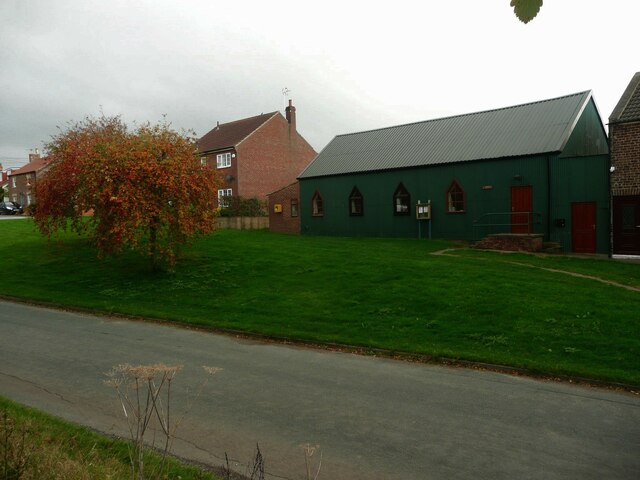
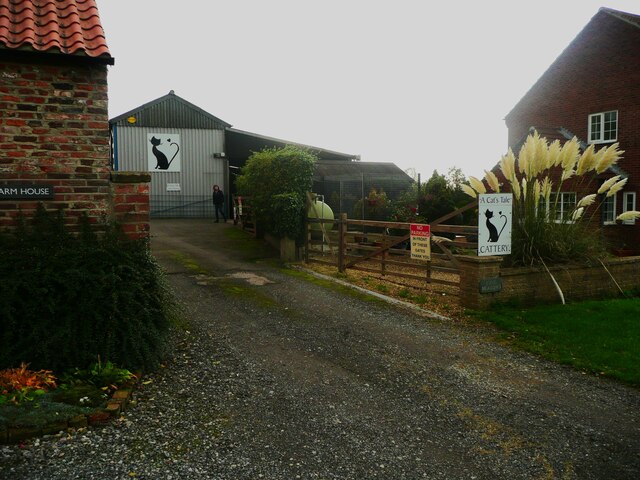
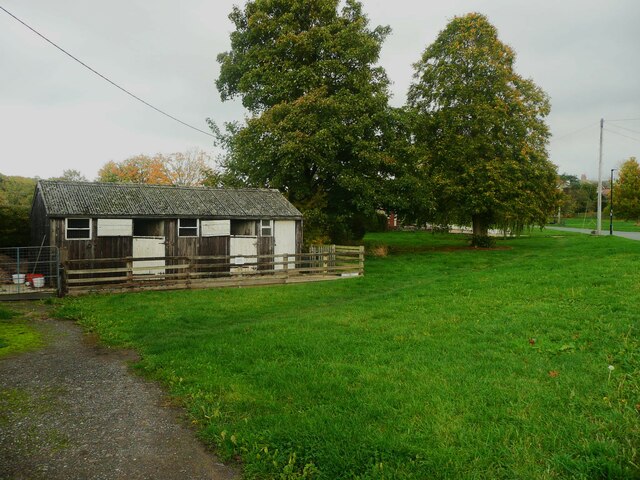
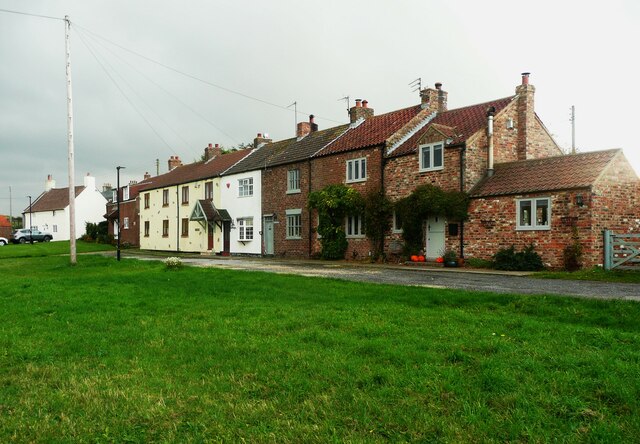
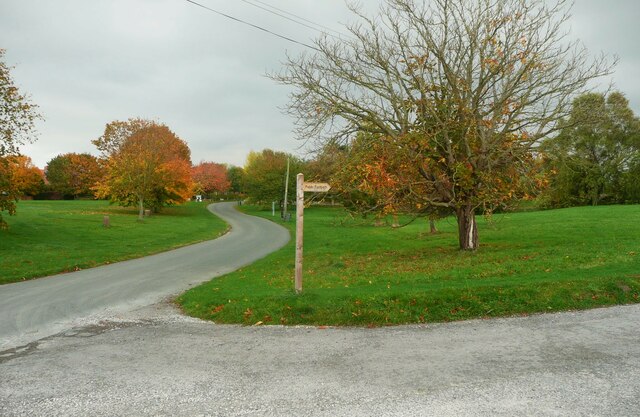
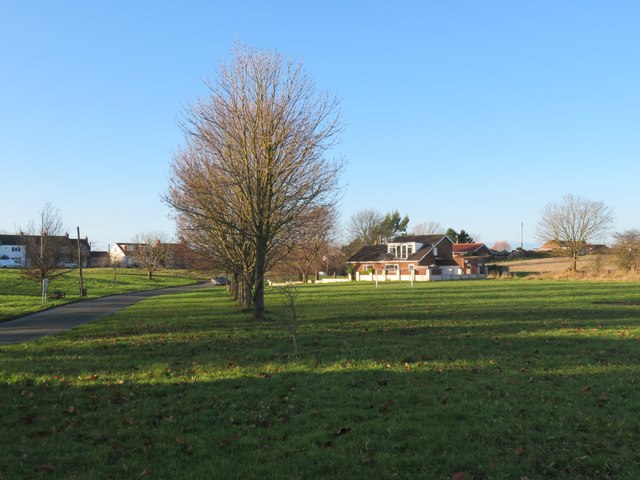
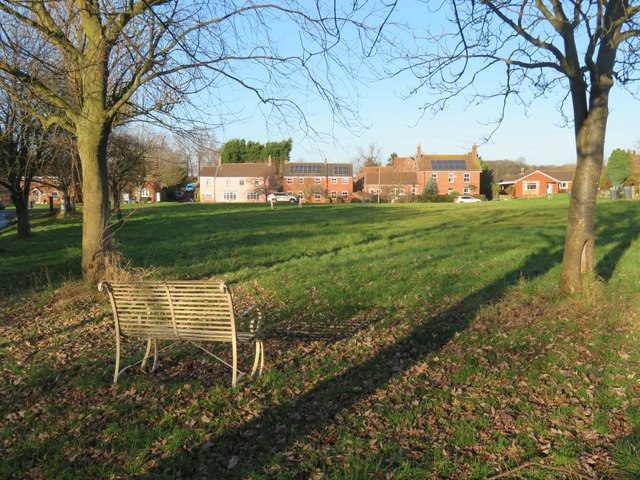
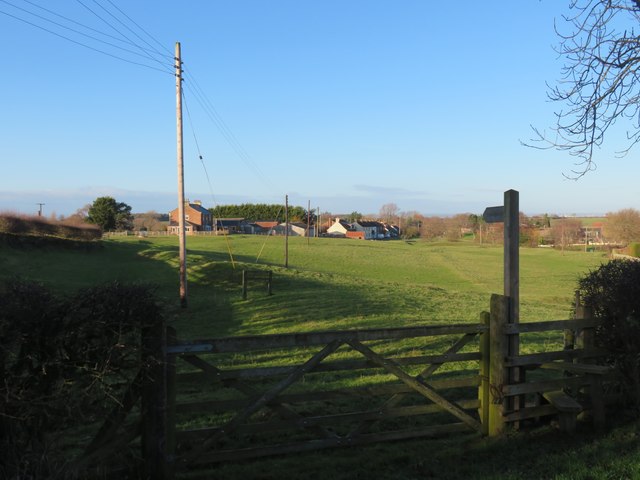

![Seamer Wind Farm [1] It would appear that there has been development here since the last time anyone photographed this site, which was back in 2010. Now a wind farm has been constructed on the site, close to the existing power lines and pylons.](https://s2.geograph.org.uk/geophotos/07/67/26/7672690_b3f9b964.jpg)
![Seamer Wind Farm [2] There have been changes here since Philip Barker submitted a photograph in 2010. There is now a wide entrance way to the site and a surfaced road leading towards a building. This is one of several turbines on this site, and another on the south side of the road.](https://s1.geograph.org.uk/geophotos/07/67/26/7672693_387a7dd4.jpg)
